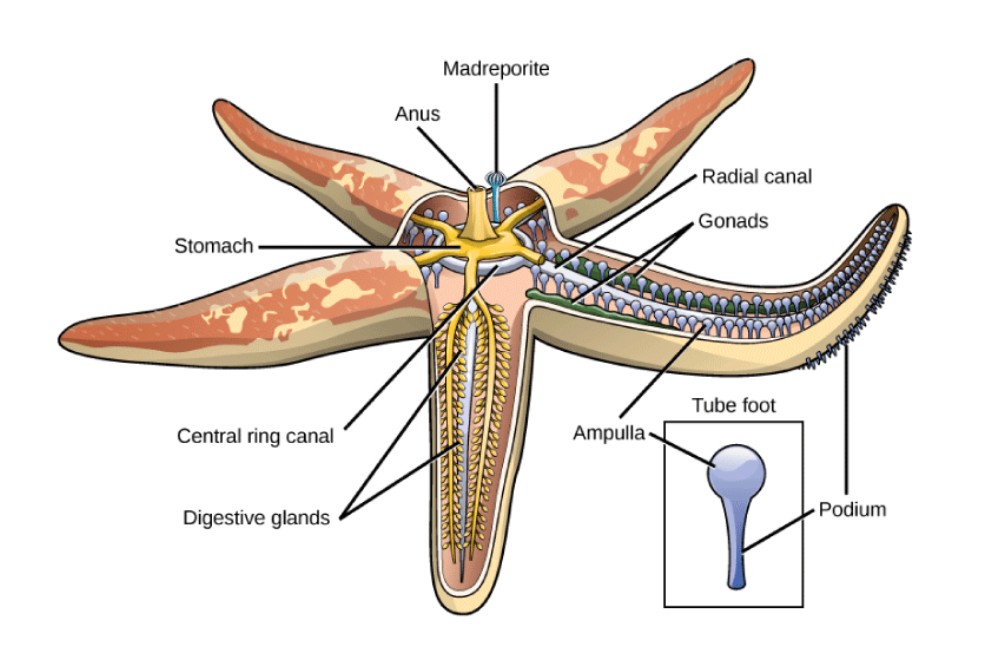Why in the News?
Since 2013, over 5 billion starfish have died along North America’s Pacific coast due to a wasting disease now linked to Vibrio pectenicida, a cholera-related bacterium.

About Starfish (Sea Stars):
- Taxonomy: Belong to phylum Echinodermata; exclusively marine organisms.
- Species: Brisingida, Forcipulatida, Velatida, Valvatida, Spinuloside
- Body Structure:
- Radial symmetry (adults), bilateral symmetry (larvae)
- Calcareous exoskeleton for protection
- Water vascular system for respiration and circulation
- Unique Features:
- Regeneration: Can regrow lost limbs
- No blood or brain: Seawater circulates nutrients
- Eyespots: At arm tips, help sense light
- Tough skin: Made of calcium carbonate
- Feeding: Carnivorous, detritivorous, and scavengers
Reasons for Mass Deaths (2013–2025):
- Causal Agent: Identified in 2025 as Vibrio pectenicida, a bacterium related to cholera-causing strains.
- Symptoms: Limb detachment; Tissue disintegration; Melting into a pile of gunk.
- Most Affected Species: Sunflower sea stars, which saw a 90% population decline.
- Geographical Spread: Along the Pacific coast from Alaska to Mexico.
- Ecological Consequences:
- Starfish are keystone predators, especially of sea urchins.
- Their decline led to urchin population explosions, which overgrazed kelp forests.
- Resulted in biodiversity loss and reduced carbon sequestration.
| [UPSC 2012] Vultures which used to be very common in Indian countryside some years ago are rarely seen nowadays. This is attributed to:
(a) the destruction of their nesting sites by new invasive species disease among them (b) a drug used by cattle owners for treating their diseased cattle persistent and fatal (c) scarcity of food available to them (d) a widespread, persistent and fatal disease among them |
Get an IAS/IPS ranker as your 1: 1 personal mentor for UPSC 2024

